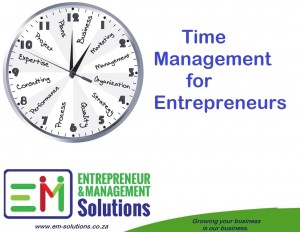
It’s a myth that entrepreneurs have a lot of time in their hands because they are their own bosses. Entrepreneurs never have enough time to do all that they need to do everyday, especially when they had just started their businesses. Juggling between raising funds and finding good employees can really be challenging, hence one needs to know how to effectively manage their time.
Time management is critical in everything in life, even in business. Your long-term success in entrepreneurship is determined by the way you manage your time. Business owners turn to have so many decisions to make and are expected to be innovative and stay in the game. All of that can really be overwhelming. Hence the need to learn the technique of managing your time.
Why is time management important? Firstly, it’s a determining factor for your overall productivity. The better you manage your time, the more productive you become. Secondly, it bears a massive impact on your psychological disposition. The worse you are at time management, the more stress you’ll experience, and the more easily exhausted you’ll be in your position.
So, business owner, here are 5 techniques you can use to better manage your time:
1. Draw the line.
Part of being an effective time manager is knowing what to do and when to do it. You must know when to “cool down” and have a firm “go home” time. This line will keep you refreshed, mitigating the risk of burnout, and will help you focus on the work that needs to be done. We know entrepreneurs are passionate about their work, so it’s tempting to take on as much work as possible. However, if you do this at the expense of your personal life, it could have dire consequences for your mental and physical health.
2. Take breaks.
A recent study suggests that working for 52 minutes and breaking for 17 is the optimal pattern for productivity. As ridiculous as it sounds, it is a fact that taking breaks will actually help you stay more productive.
3. Choose efficient modes of communication.
You don’t need to call an hour-long meeting every time you have an update. Emails are instant, written and permanent, and can be executed much faster than a phone call. Try and communicate as concise as possible, and you could save yourself hours a day.
4. Delegate.
There is nothing wrong with delegating. Most new entrepreneurs see their businesses as their baby, and they’re intimidated to let anyone else take control. As a result, they take on a lot of tasks they otherwise wouldn’t and end up overloaded. Save yourself a lot of time and be an effective ‘delegator’.
5. Focus on one thing at a time.
Multitasking is good, but can be distracting. Do not attempt to multitask, and let yourself get distracted by items that have newly arisen. Instead, focus on one item at a time, and don’t stray from it until it’s complete.





